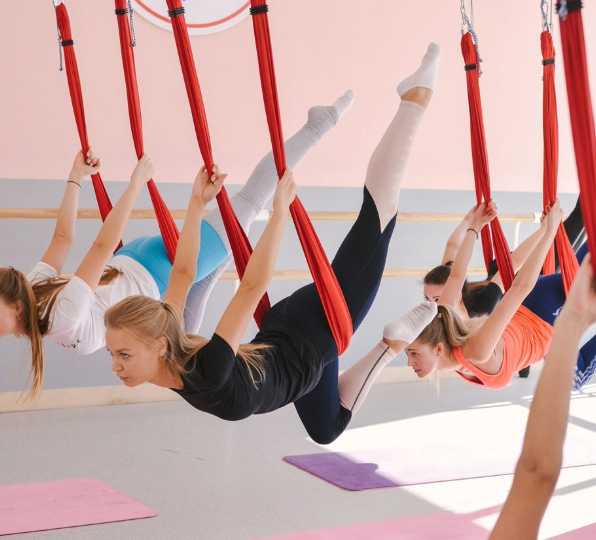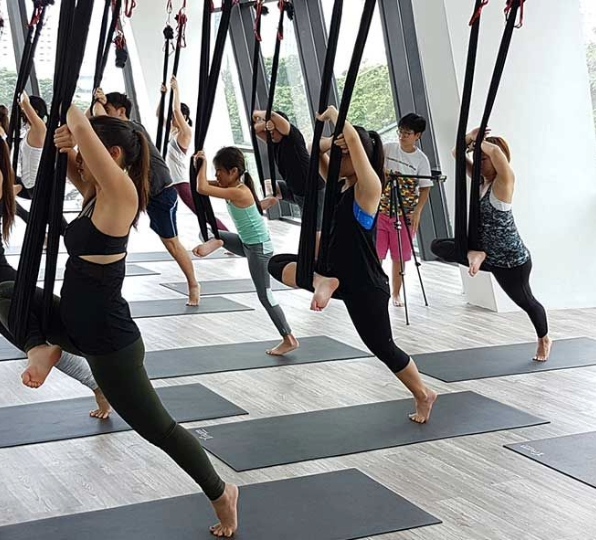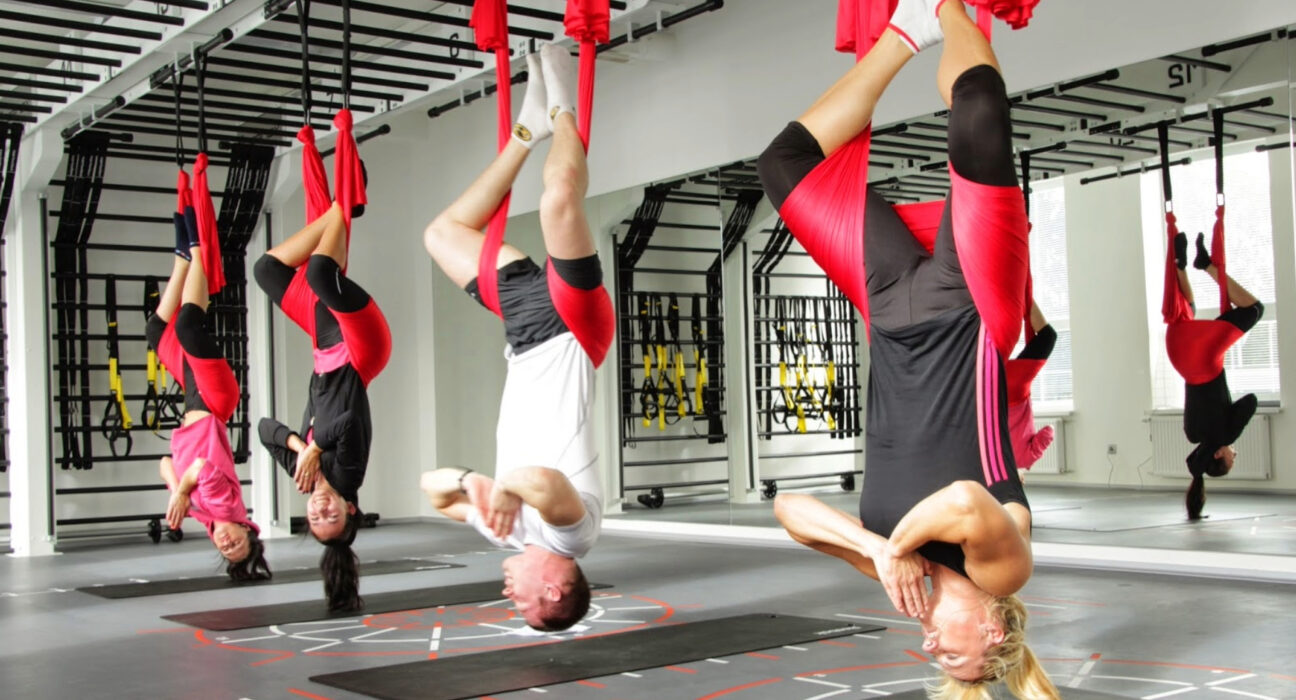Introduction:
Aerial yoga has soared into the fitness scene, offering a unique and exhilarating way to combine traditional yoga with elements of acrobatics and aerial arts. Suspended in the air by silk hammocks, participants experience a blend of strength, flexibility, and mindfulness. In this guide, we’ll explore the world of aerial yoga, delving into its benefits, key poses, safety considerations, and the joyous fusion of fitness and fun that unfolds when you take to the air.
1. Introduction to Aerial Yoga
Aerial yoga, also known as anti-gravity yoga, takes the principles of traditional yoga and incorporates the use of silk hammocks suspended from the ceiling. This innovative practice allows participants to explore yoga postures both on the ground and in the air, adding an element of excitement and challenge.
2. Benefits of Aerial Yoga
- Increased Flexibility: By promoting a wider range of motion, aerial yoga enables practitioners to deepen their stretches and increase their flexibility.
- Strengthening of the Core: The hammock’s instability works the core muscles, resulting in heightened stability and strength.
Reduced tension and spinal decompression can be achieved through inversions and mild spinal traction. - Aerial yoga enhances the meditative elements of traditional yoga, which leads to a greater emphasis on relaxation and mindfulness.
- Enhanced Balance: By testing proprioception and balance, aerial yoga poses improve general body awareness.
- Strengthening the upper body is necessary for many poses, which helps tone the arms, shoulders, and back.
- Stress Relief: The experience is calm and stress-relieving because of the weightlessness and breathing exercises.
3.Key Poses in Aerial Yoga
- Floating Savasana: Encased in the hammock, participants enjoy a calming and weightless savasana. Inverted Pigeon Pose: This version of the traditional pigeon pose offers a deep hip stretch by being executed upside down.
- Aerial Downward Dog: This pose stretches the entire spine by supporting the body in a suspended downward dog. The Flying Pigeon Pose is a difficult arm balance that incorporates an aerial twist into the standard pigeon pose. Aerial Plank: This exercise tests core stability and strength by having the feet supported in a plank position by the hammock. Upside-Down Bow Pose: This inversion opens the shoulders and chest as the practitioner hangs upside-down in the shape of a bow.
4.Safety Considerations
Professional Training: To ensure correct technique and safety, it is best to learn aerial yoga under the supervision of a certified instructor. Equipment Inspection: To guarantee safety during practice, periodically inspect the hammocks and rigging.
Individual Restrictions: Before attempting aerial yoga, participants with specific medical conditions, such as glaucoma or heart problems, should speak with a healthcare provider.
5.Aerial Yoga for All Fitness Levels
Fitness levels can be accommodated in aerial yoga classes, making the practice accessible to novices and demanding for seasoned practitioners. To accommodate students with varying abilities, instructors frequently offer variations for poses.
6. Building Confidence in the Air
As practitioners advance from fundamental poses to more complex maneuvers, aerial yoga cultivates a feeling of accomplishment among students. Gaining self-assurance in everyday life corresponds to developing confidence in inversions and aerial poses.
7. Aerial Yoga and Mindfulness
Because aerial yoga practitioners must focus on breath, movement, and the present moment, the practice fosters mindfulness. The aerial setting gives the mindfulness component of the practice a playful touch.
8. Aerial Yoga as a Social Activity
Aerial yoga courses frequently foster a friendly and communal environment as students share the amazing sensation of floating in midair. Group exercises and partner poses help to build camaraderie.
9. Fun and Playfulness in Aerial Yoga
Aerial yoga encourages practitioners to embrace the enjoyable aspects of fitness by incorporating a playful and joyful element into the practice. The workout gains an exciting dimension from the sensation of flying and experimenting with different poses.
10.Aerial Yoga for Stress Relief
Aerial yoga is a useful tool for stress relief because of its meditative and restorative qualities. Relaxation can be aided by the hammock’s soft swings and calming inversions.
11.Aerial Yoga and Core Engagement
To maintain balance and stability during aerial yoga poses, the core muscles must be constantly engaged. Participants gradually develop better core strength and stronger abdominal muscles.
12.Incorporating Aerial Yoga into Your Fitness Routine
If you want to become proficient and confident in aerial yoga, go to regular classes. Make sure you have the required tools and safety precautions in place before you explore online tutorials for at-home practice.


Conclusion:
Combining the health benefits of traditional yoga with the exhilaration of being suspended in the air, aerial yoga offers a novel and thrilling approach to physical fitness. Not only does the practice improve physical health, but it also infuses playfulness and mindfulness into the exercise regimen. Thus, extend your reach, grab hold of the hammock, and dive headfirst into the realm of aerial yoga. The combination of fun and fitness in the air is waiting for you, whether you’re an experienced yogi or a fitness enthusiast seeking a new challenge. Experience the delight of floating in midair, hanging upside down, and finding strength and balance in unexpected places. Join us as we take you on a journey of well-being, joy, and creativity through aerial yoga, where you can literally and figuratively elevate your practice.
Use our enlightening blog post on Functional Movement Screening: Assessing Your Physical Fitness to further your fitness journey. Discover how to improve your general well-being and movement habits.












